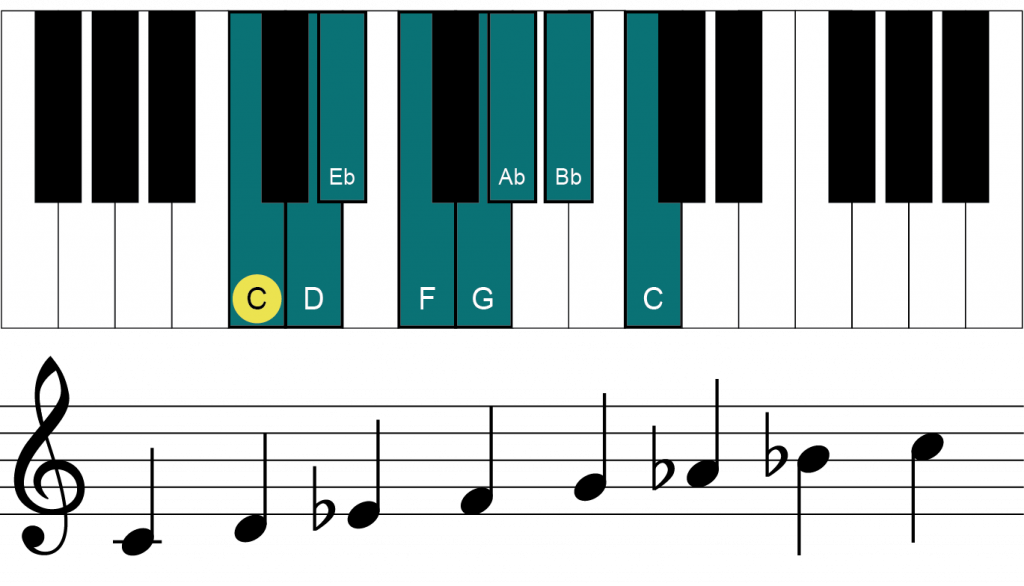4 The Natural Minor Scale
While the major scale is a commonly used scale, it is not the only one. The natural minor scale is commonly found in classical, folk, and contemporary music as well. The natural minor scale can be viewed in one of two ways: either as a displaced major scale starting on the 6th, or as a major scale with the third, sixth, and seventh notes lowered by one semitone. More details can be found in Chapter 11 of Introduction to Music Theory and Rudiments.

Here is what it sounds like.
Focus on the third, sixth, and seventh notes, and notice how they compare to the sounds of the major scale. Some musicians hear this scale as starting on the sixth note of a major scale, so to sing it using numbers, you could sing 6,7,1,2,3,4,5, and then 6 to finish. When you sing or hum this, is that how the scales sounds/feels to you? If not, try singing it as you would with the major scale, but be sure to lower the third, sixth, and seventh notes—that’s what creates the minor sound associated with this scale.
Listen to the audio example above, then use the Record button below to record yourself humming or singing the natural minor scale. Do they sound the same? If not, where and how do they sound different? Once you’ve discovered where they differ, try again and see if you can improve.

